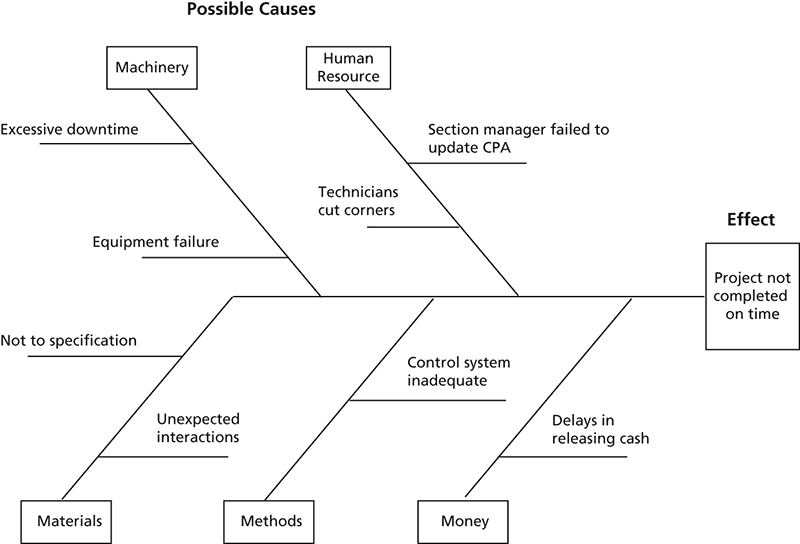cause–effect diagram
cause–effect diagram(fish-bone diagram; Ishikawa diagram) A diagram that, by working back from a given problem, is used to identify the main categories of possible causes of the problem and then to generate detailed lists of specific possible causes. Attributed to Kaoru Ishikawa, the technique is one of a set taught to members of quality circles or quality-improvement teams within the total quality management process. The method involves four steps: (1) identifying the problem or effect to be analysed; (2) identifying the main classes of possible causes using categories appropriate to the process under review; (3) identifying possible detailed causes under each of these categories; (4) recording these possible causes on the diagram to enable them to be discussed and clarified.

Cause–effect diagram.
- advertising awareness
- advertising brief
- advertising network
- advertising rates
- advertising schedule
- Advertising Standards Authority
- advertising theme
- advice note
- advise fate
- advocacy promotion
- adware
- affective component
- affective engineering
- affidavit
- affiliate model
- affinity card
- affirmation of contract
- affordable method
- afghani
- afloat
- African, Caribbean, Pacific Group
- African Development Bank
- African Union
- after date
- after-hours deals